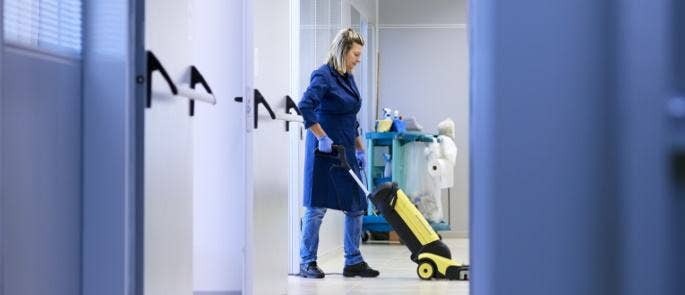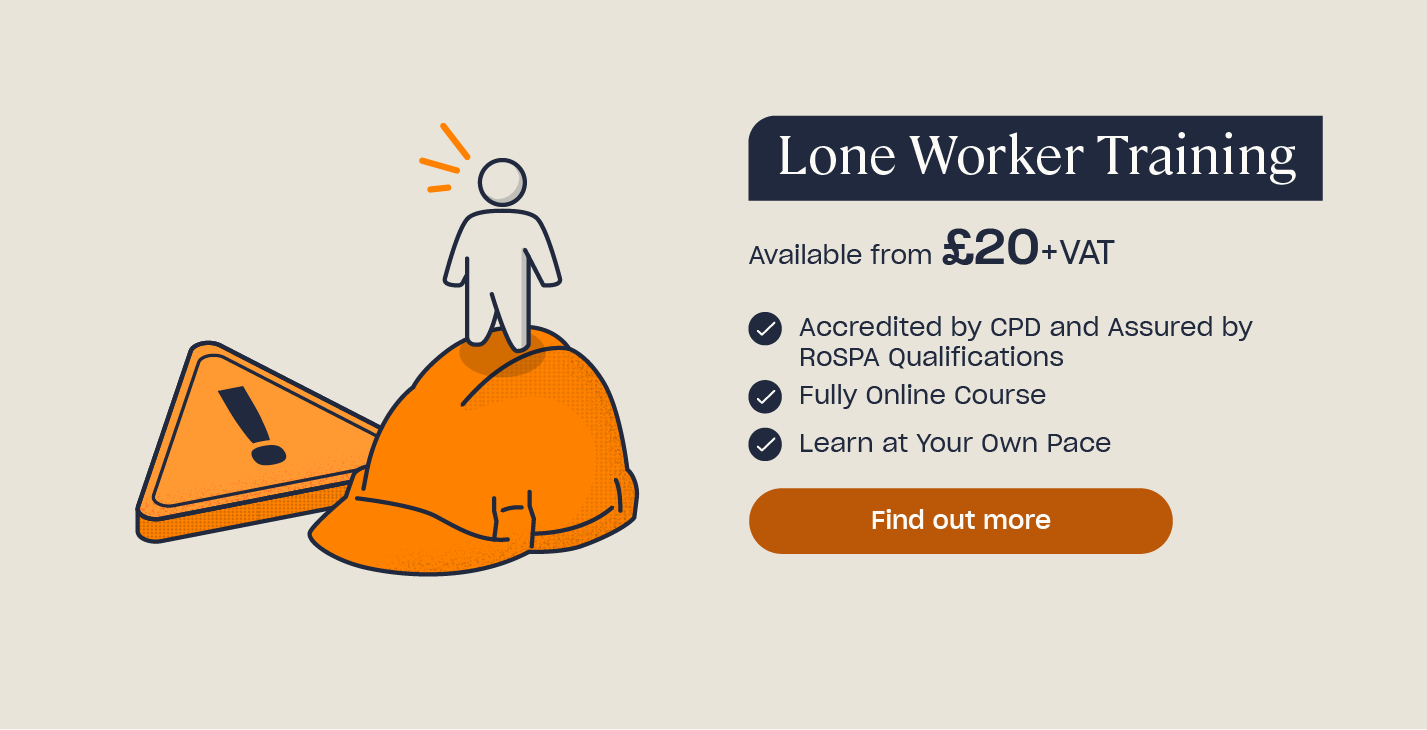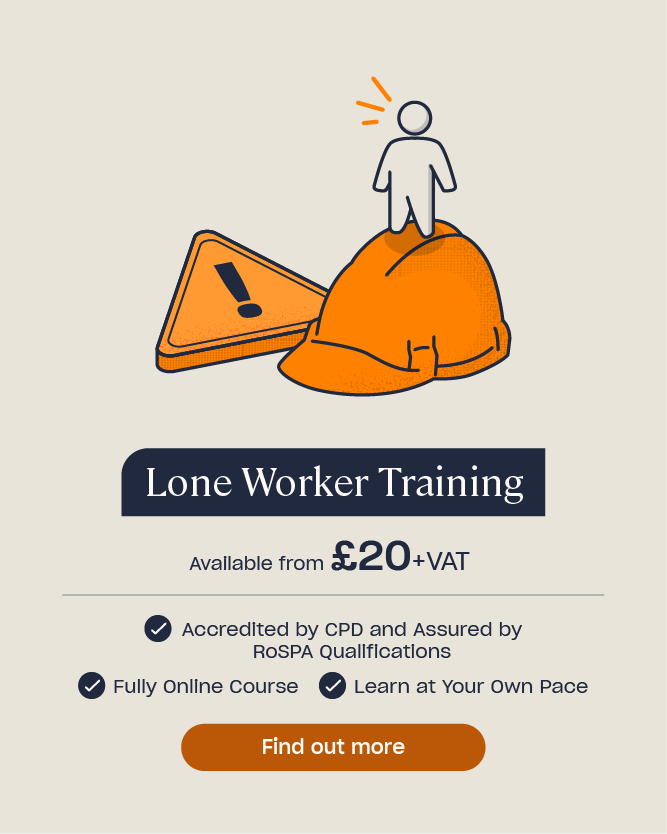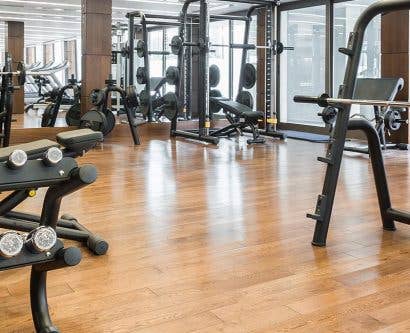Risk Assessment Checklist for Lone Working
Lone working is becoming more popular than ever. Remote working, flexible working hours, contractual work, and technical advances all lend themselves to an increased number of people working alone.
However, there are a number of risks that accompany lone working. If you are responsible for lone workers, it’s essential that you manage these risks and take appropriate steps to protect their health and safety.
What is a Lone Worker?
The Health and Safety Executive defines lone workers as those who work by themselves without close or direct supervision. Anybody who works alone or who is self-employed is classed as a lone worker.
According to SoloProtect, it has been estimated that there are 8 million lone workers in the UK, 22% of the 31.2 million UK working population. These workers are exposed to a number of risks because of the individual nature of their work, so it’s important to take precautions that protect these workers.

Examples of Lone Workers
Lone workers are not simply people who work by themselves. In fact, many lone workers work with the general public for long periods of time. Lone workers include people who work alone in a fixed separate location to their manager or team, or those who work away from their fixed base.
Lone workers who work alone in a fixed separate location includes those who work:
- In a small workshop, shop, petrol station, bakery, butchers, or kiosk.
- At home.
- Outside of normal working hours, such as cleaners and security guards.
It also includes people who work in the same facility as others, such as in a factory, but who work alone for a period of time, like in an individual workshop.
Lone workers who work away from their fixed base includes:
- Social workers, care workers, and health visitors.
- Construction and maintenance workers.
- Cleaners who travel to different locations.
- Service workers, such as postmen.
- Decorators and window cleaners.
- Locksmiths.
- Electricians and engineers.
- Pest control workers.
- Taxi drivers.
- Contractors.
What are the Risks of Lone Working?
All workers are at risk of health and safety hazards, but those who work by themselves are at a greater risk than others. This is because it’s harder to keep track of hazards when you’re not in a certain environment and because responsibility for health and safety becomes blurred between employer and employee. Further external factors, like working with the public, can also carry risk. However, there are a number of points to consider if you are responsible for lone working.
Capability
Consider whether the job can be done by just one person or if more people are needed. For example, if you’re sending a worker out for a removal project, are they capable of lifting the furniture on their own? Furthermore, the degree of risk from a certain activity may be high for one individual, but lower if two people are working together. For example, if a worker is at high risk using a ladder, you could lower this level of risk by having somebody else there to stabilise it.
You should also check if the worker has the appropriate training for the task at hand. Using our previous example, has the removal worker received manual handling training?

Individual
It’s important that you consider the capabilities and skills of the individual worker. For example, certain people may not be medically fit to work alone. You should also consider whether certain individuals are at a heightened risk, including:
- Trainees and new members of staff.
- Young workers.
- Pregnant workers.
- Disabled workers.
Stress
Stress is a common health risk in many workplaces. In 2017/18, it was the biggest cause of work-related ill health, bypassing musculoskeletal disorders. If people work on their own, it can be difficult to identify signs that they are stressed and might need help. This could lead to many people continuing and struggling without reaching out for help, making themselves worse. Furthermore, if somebody works from home, they may be working additional hours that you simply don’t know about.
Loneliness and Mental Wellbeing
As well as stress, it’s also necessary that you consider the risk of loneliness to the lone worker. Long periods of time spent alone can lead to feelings of loneliness and isolation. Ensure that you factor in this risk and consider further mental health conditions, like depression and anxiety.
Equipment
It’s essential that you assess the work process and whether it involves using dangerous equipment. If it does, it might be necessary for the worker to have someone to supervise them.
You should also ensure that people know how to use equipment and set it up. This doesn’t only apply to dangerous machinery, but to all equipment. For example, if a worker is working from home for a while rather than in the office, do they know how to safely set up their workstation and display screen equipment at home?

Violence
Consider whether there’s a risk of violence to lone workers. For example, is it likely that they’ll be attacked on a construction site, or are they going to somebody’s home where they have a history of violence? Implement measures to control this threat.
Supervision
The amount of supervision a lone worker needs depends on the risks involved in their work. Before you allow a worker to work on their own, you need to consider the amount of supervision they need and will receive. When a worker is new to a job, doing a job that carries specific risks, or is having to deal with new situations, then it’s recommended that they’re supervised more extensively.
Monitoring
Similar to supervision, it’s essential that you monitor the worker and their situation. Communication is essential in upholding health and safety. Some effective communication methods include:
- Visiting the worker often and observing them working alone.
- Regular contact between the worker and yourself.
- Implementing warning systems. For example, installing an alarm in a workshop where people often work alone.
- Implementing rigid communication rules, such as a worker letting you know when they’re home safely.
Ensure that you consider any language barriers between yourself and lone workers. Make sure that any workers who don’t have English as a first language know what they’re doing, how to keep themselves safe, and emergency procedures.
Emergency Procedures
It’s essential that you make contingency plans in case of an emergency. For example, if a lone worker falls and collapses, how would anybody know to find them? Decide on these plans before you ask somebody to work alone.
Need a Course?
Our Lone Worker Training will provide you with a variety of practical controls that you can implement in your work environment to help keep lone workers safe from harm.
For more information on protecting lone workers, you may want to take a look at Implementing an Effective Lone Working Buddy System.
Lone Working Risk Assessment Checklist
To ensure health and safety, it’s essential that you consider everything we’ve mentioned above. Here’s a checklist to remind you of what you should do:
- Think about the environment where the task is happening, for example on a construction site, at a patient’s home, or at the worker’s own home. Then, consider the risks that are present in that location.
- Consider the task – can one person do it or does it need multiple people? Does it require machinery that needs special training? How long will it take?
- Consider the worker. Have they had appropriate training for the work? Do they know how to use the equipment? Are they capable of doing the task? Do they have any medical conditions that might affect their safety? Do you need to make certain considerations, such as for young and disabled workers?
- Decide on emergency procedures. How will somebody alert you if they’re injured? How will you know people are safe? Put emergency procedures in place before you continue.
- Evaluate the risk to the worker’s health and safety, including the threat of violence and injury.
- Assess the risk to mental wellbeing. Does the worker have a history of mental health difficulties? Are they going to be working alone for extensive periods of time?
- Decide the amount of monitoring and supervision required. Will you only see them when the task is completed? Will you communicate daily? Are you going to check their progress on a daily basis?
- Communicate with the employee. Ensure they are comfortable with lone working, confident with the task required, understand health and procedures, and know how to communicate with you.
You can download a risk assessment template at the link below:

Lone working is becoming increasingly common, but it also presents a range of risks and hazards. Ensure that you consider these risks and implement appropriate measures to protect the health and safety of your workers.
What to Read Next:
- Lone Working Training Course
- Time Management Matrix – Free Template
- What is a Dynamic Risk Assessment?
- Workplace Stress Risk Assessment










